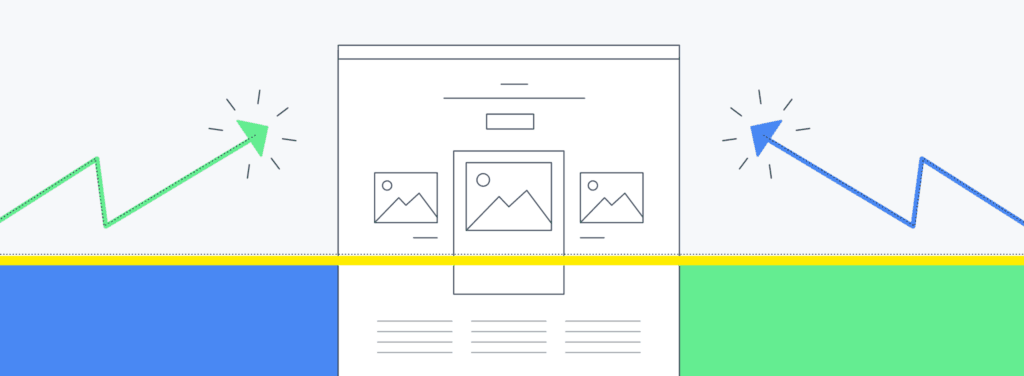It’s no secret that companies figured out how much potential lies in the online world. Ever since then, they started investing heavily in marketing. This way, they ensure they’re receiving plenty of visibility, traffic, and clients. In other words, this is how the entire concept of SEO was born. However, long before the age of the Internet, the most sought-after accomplishment was having a piece or an article about your brand, company, or business on the first page of the newspaper, above the fold.
The “above the fold” is a concept with origins in the newspaper industry. That’s when sellers would fold the newspaper, thus being able to display only the first half of the paper. This practice proved challenging for newspaper editors. For decades, they had to really think things through in terms of titles and images. The above the fold content had to be catchy and attention-grabbing in order to ensure sales. That was also how the concept of “clickbait” was born, albeit a very primitive version of it.
Nowadays, we still use this concept in website design. Basically, it refers to the portion of a webpage that you can see on the screen without having to scroll down. However, the rules of SEO are constantly changing and the concept of “above the fold” is quickly losing ground. Here’s why:
The ‘Above the fold’ Concept is Growing Obsolete:
1) The Call-to-Action concept:
One of the most powerful and popular concepts implemented in online marketing is the CTA (Call-to-Action). This is where the real power exists. Counter-intuitively, calls to action are always below the fold, otherwise, they seem spammy. The CTA positively increases the conversion rate, meaning the visitors of a website are converted into buyers or clients. This is hard evidence that the concept of ‘above the fold’ is no longer king in our day and age.
2) Scrolling:
More and more people think of websites as places filled with individual stories. If we look back a couple of decades ago, we see websites very differently. We used to think of them as a single piece of virtual paper, where the above the fold content mattered. Nowadays, thanks to the timelines of social media giants, we look at things from an entirely different perspective.
3) Design:
There is no design without functionality – the very definition of this concept implies it! Therefore, in order to satisfy the need for beauty and functionality, the concept of the fold must be ignored altogether. Visitors don’t want a website that is difficult to read. They also dislike it if the designers cram the information above the fold. Instead, visitors want a pleasant overall experience. In other words, they want a good design and quality content.
There are plenty of websites nowadays that have a large, elegant image with minimal text as their landing page. This speaks volume on how obsolete the concept of ‘above the fold’ really is.
So, if the “above the fold” concept is obsolete, then how exactly can a business make their website stand out? The answer is quite easy: by making the user experience overall pleasant. This can be achieved through a number of things, such as ensuring swift load times, high-quality content and hiring an SEO expert or team to help take your website to a whole new level. There are numerous SEO services out there that will test your website, identify its weak spots and then come up with a plan to fix them.
All in all, the concept of “above the fold” is most definitely on its way to extinction. While there are still some businesses that design their websites with this concept in mind, the vast majority have learned to adapt to the new rules and therefore enjoy high conversion rates and traffic.
